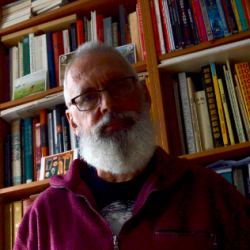Interoperability of annotations and user sets
This Task Force aimed to foster interoperability across the applications and projects in the Europeana context that produce, publish and/or consume annotations and user sets, by maturing the specifications that are used in the process, notably in terms of data models and APIs.
Projects working with annotations and other forms of user-contributed (meta)data, such as transcriptions, translations, tags, reviews but also groupings of objects like virtual collections, personal galleries, and 'stories' have made their way in cultural heritage projects for several years.
Several EuropeanaTech publications (for example this issue of EuropeanaTech Insight) have reflected this. Past projects from the Europeana community have made significant use of various forms of annotations and user sets: Europeana 1914-1918, Europeana 1989, Europeana Awareness, Europeana Creative, DM2E, PATHS, Europeana Sounds, Food and Drinks, LOCloud, among others. In the context of the DSI Generic Services projects, others have begun their own developments on related features (EnrichEuropeana, CrowdHeritage, Europeana Media), next to the DSI core service itself.
These projects want to share this data with Europeana, which is developing an Annotation API and a User Set API. We need to make sure that all efforts are interoperable across the board. This is of value for the wider community, as efforts on the same topic happen in institutions and projects everywhere.
There has been work within earlier projects, where a first draft has been made to apply the recently completed W3C Web Annotation Data Model standard to scenarios relevant to Europeana. A set of documents for a draft profile of the Europeana Data Model represents the current status of this effort.
These draft specifications have been implemented in an alpha Europeana Annotations API. There is also an official EDM profile for collections (which the Europeana Foundation has started to refresh internally) and a draft for User Sets API.
The goal of this Task Force was to bring this line of work one step further, by first gathering the use cases and requirements from the parties currently working in this area, comparing them with each other and against the scenarios already identified. The second step was to solidify the existing specifications so that the entire community can use them as a reference in their work on producing, exchanging and consuming annotations. The Task Force aimed to therefore confirm existing proposals and/or make recommendations for updating them, which will be considered for developments by the parties in charge of implementation.
Out of scope for this task force
While the Task Force focused on appropriately meeting needs raised in terms of representing the provenance of the data, which are necessary to meet policy-level and other strategic goals, it did not seek to articulate a policy on provenance, privacy or trust. Any policy aspects with regard to trust/provenance/privacy will be passed to other groups within the Europeana Network Association (such as the Copyright Community).
Outcomes
- Identify relevant cases for annotations and user sets coming from different projects. Identify different categories of annotations in scope, what types of requirements these annotations need to answer. [Report]
- Formalise best practices and specifications to make the data interoperable, focusing on existing EDM profiles for annotations and user sets and APIs. [Reports and specifications]















